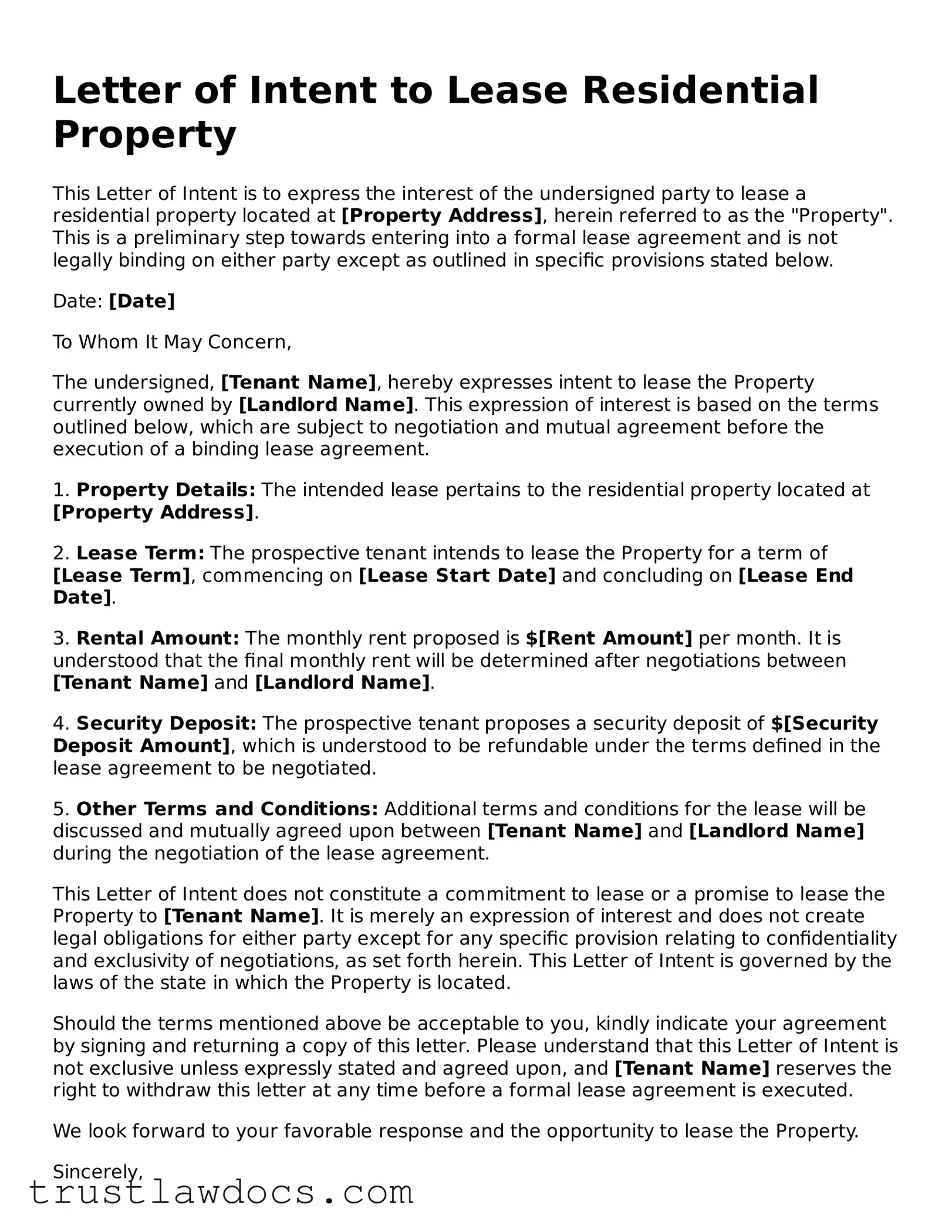What is a Letter of Intent to Lease Residential Property?
A Letter of Intent to Lease Residential Property is a document that potential renters send to landlords or property managers. It expresses the sender's serious interest in leasing an apartment or house. This letter typically includes proposed rental terms, such as lease duration and monthly rent, and requests to negotiate the formal lease agreement.
Why is the Letter of Intent necessary?
The Letter of Intent serves several purposes. It demonstrates to the landlord that you are a serious and committed prospective tenant. It also sets the stage for negotiating the lease terms. By clearly presenting your terms upfront, you can expedite the leasing process and avoid misunderstandings later on.
When should I send a Letter of Intent?
Send a Letter of Intent once you've found a residential property you're interested in and have decided you want to pursue leasing it. It's advisable to send it before engaging in detailed lease negotiations or submitting a formal application. This allows you to express your interest and propose terms early in the process.
What details should be included in the Letter of Intent?
Your Letter of Intent should include your name, the address of the property you wish to lease, proposed lease terms (lease duration, monthly rent), any requests or terms (like pet policies or included utilities), and your contact information. It may also express readiness to proceed with a formal application or to provide a security deposit.
Is a Letter of Intent legally binding?
No, a Letter of Intent itself is not a legally binding contract for lease. It is a preliminary communication expressing intent and proposing terms. The formal and legally binding lease agreement comes after, incorporating and possibly renegotiating the terms mentioned in the Letter of Intent.
How can a landlord respond to a Letter of Intent?
Landlords can respond in several ways. They can accept the terms as is, which is rare, suggest adjustments to the terms, or reject the terms outright. The response typically initiates negotiation, leading to a formal lease agreement that reflects mutually agreed-upon terms.
Can I withdraw a Letter of Intent?
Yes, since the Letter of Intent is not legally binding, you can withdraw it if you change your mind about the property or the lease terms. However, it's best to communicate this decision to the landlord promptly and respectfully to maintain positive relations.
What if we can't agree on the terms?
If you and the landlord cannot agree on the terms after negotiating, it's acceptable to walk away from the potential lease. Not all properties or lease terms are a good fit for every tenant, and it's important to find an agreement that meets your needs and budget.
How formal should the Letter of Intent be?
The Letter of Intent should be formal but approachable. Use a respectful tone, clear language, and a professional format. Address the landlord or property manager by name, if known, and express your intentions concisely but thoroughly. Remember, this document is your initial impression and sets the tone for future interactions.
